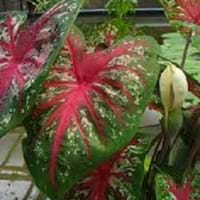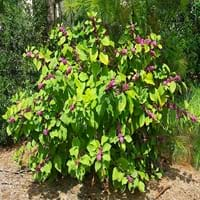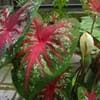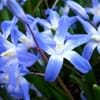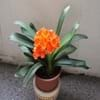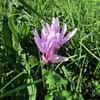Life Span
Annual and Perennial
Perennial
Type
Tender Perennial
Shrub
Origin
Southern Europe, Mediterranean
Southeastern United States, South-Central United States
Types
Not Available
Not Available
Habitat
gardens, Grassland, Prairies, tropical environments, Tropical regions
bottomlands, Coastal Regions, Moist woods, pine woods, Slopes, Swamps, Thickets, Woods
USDA Hardiness Zone
7-9
6-11
Sunset Zone
4, 5, 6, 14, 15, 16, 17, 18, 19, 20, 21, 22, 23, 24
3a, 3b, 4, 5, 6, 7, 8, 9, 14, 15, 16, 17, 18, 19, 20, 21, 22, 23, 24
Habit
Mat-forming
Arching/Fountain-shaped
Flower Color
White, Green
Pink, Lavender
Flower Color Modifier
Bicolor
Not Available
Fruit Color
Green
Purple, White
Leaf Color in Spring
Gray Green
Light Green
Leaf Color in Summer
Gray Green
Light Green
Leaf Color in Fall
Gray Green
Yellow green, Tan
Leaf Color in Winter
Light Green
Not Available
Leaf Shape
Linear
Elliptic
Plant Season
Spring, Summer, Fall, Winter
Spring, Summer, Fall
Sunlight
Full Sun, Partial Sun
Full Sun, Partial Sun, Partial shade
Type of Soil
Loam, Sand
Clay, Loam, Sand
The pH of Soil
Neutral, Alkaline
Acidic, Neutral
Soil Drainage
Well drained
Well drained
Bloom Time
Spring, Late Spring, Early Summer, Summer, Late Summer, Early Fall
Early Summer, Summer, Late Summer
Tolerances
Drought
Not Available
Where to Plant?
Container, Ground, Pot
Ground, Pot
How to Plant?
Seedlings, Stem Cutting
Cuttings, Seedlings
Plant Maintenance
Medium
Medium
Watering Requirements
Allow soil to be completely dry in between waterings, Water Deeply, Water less during winter
Medium
In Summer
Lots of watering
Lots of watering
In Spring
Moderate
Moderate
In Winter
Average Water
Average Water
Soil pH
Neutral, Alkaline
Acidic, Neutral
Soil Type
Loam, Sand
Clay, Loam, Sand
Soil Drainage Capacity
Well drained
Well drained
Sun Exposure
Full Sun, Partial Sun
Full Sun, Partial Sun, Partial shade
Pruning
Cut or pinch the stems, Do not prune during shooting season, Prune if you want to improve plant shape, Prune prior to new growth, Remove deadheads
No need to prune
Fertilizers
No fertilizers needed
All-Purpose Liquid Fertilizer, fertilize in spring, Use a fertilizer ratio of 16-4-8
Pests and Diseases
fungus, Insects, Red blotch
Red blotch
Plant Tolerance
Drought
Not Available
Flower Petal Number
Single
Single
Foliage Texture
Fine
Coarse
Foliage Sheen
Matte
Matte
Attracts
Bees, Birds, Butterflies
Birds, Butterflies
Allergy
Skin irritation
Poisonous
Aesthetic Uses
Beautification, Showy Purposes
Showy Purposes
Beauty Benefits
Not Available
Not Available
Environmental Uses
Air purification
Air purification, Food for animals, Food for birds
Medicinal Uses
No Medicinal Use
Colic, Dysentry, Fever, Malaria, Rheumatism, Stomach pain
Part of Plant Used
Whole plant
Flowers, Root
Other Uses
Showy Purposes
Showy Purposes, Used as Ornamental plant, Used for bedding in gardens, Used for fragrance, Used for its medicinal properties, Used for Landscaping
Used As Indoor Plant
No
No
Used As Outdoor Plant
Yes
Yes
Garden Design
Alpine, Container, Edging, Foundation, Groundcover, Mixed Border, Rock Garden / Wall
Foundation, Mixed Border, Screening, Wind Break
Botanical Name
CALADIUM 'Aaron'
CALLICARPA americana
Common Name
Aaron Caladium, Angel Wings, Fancy-leaved Caladium
American beautyberry , French mulberry
In Hindi
Aaron Caladium
American Beautyberry Tree
In German
Aaron Caladium
Amerikanische Schönbaum
In French
Aaron Caladium
Américaine Beautyberry Arbre
In Spanish
Aaron Caladium
Americana beautyberry Árbol
In Greek
Aaron τροπικό φυτό
American Beautyberry Δέντρο
In Portuguese
Aaron Caladium
Árvore Beautyberry Americana
In Polish
Aaron Caladium
Amerykański pięknotka Drzewo
In Latin
Aaron Caladium
Latin Beautyberry ligno
Phylum
Tracheophyta
Magnoliophyta
Class
Liliopsida
Magnoliopsida
Order
Alismatales
Lamiales
Family
Araceae
Verbenaceae
Genus
Caladium
Callicarpa
Clade
Angiosperms, Monocots
Angiosperms, Asterids, Eudicots
Tribe
Not Available
Not Available
Subfamily
Aroideae
Ranunculoideae
Number of Species
Not Available
Not Available
Importance of Aaron Caladium and American Beautyberry
Want to have the most appropriate plant for your garden? You might want to know the importance of Aaron Caladium and American Beautyberry. Basically, these two plants vary in many aspects. Compare Aaron Caladium and American Beautyberry as they differ in many characteristics such as their life, care, benefits, facts, etc. Every gardener must at least have the slightest clue about the plants he wants to plant in his garden. Compare their benefits, which differ in many ways like facts and uses. The medicinal use of Aaron Caladium is No Medicinal Use whereas of American Beautyberry is Colic, Dysentry, Fever, Malaria, Rheumatism and Stomach pain. Aaron Caladium has beauty benefits as follows: Not Available while American Beautyberry has beauty benefits as follows: Not Available.
Compare Facts of Aaron Caladium vs American Beautyberry
How to choose the best garden plant for your garden depending upon its facts? Here garden plant comparison will help you to solve this query. Compare the facts of Aaron Caladium vs American Beautyberry and know which one to choose. As garden plants have benefits and other uses, allergy is also a major drawback of plants for some people. Allergic reactions of Aaron Caladium are Skin irritation whereas of American Beautyberry have Poisonous respectively. Having a fruit bearing plant in your garden can be a plus point of your garden. Aaron Caladium has no showy fruits and American Beautyberry has showy fruits. Also Aaron Caladium is not flowering and American Beautyberry is flowering. You can compare Aaron Caladium and American Beautyberry facts and facts of other plants too.
